Rio de Janeiro

After yesterday evening’s beautiful sunset, today we visited Rio de Janeiro (pronounced “Ree-oh dey zhuh-nair-oh”) which is often referred to simply as “Rio”.
Rio de Janeiro is widely recognized as one of the world’s most beautiful cities. Its name translates to “River of January”, the name given to the city’s original site by Portuguese navigators who arrived in January of 1502 and mistook the entrance of Guanabara Bay bay for the mouth of a river.
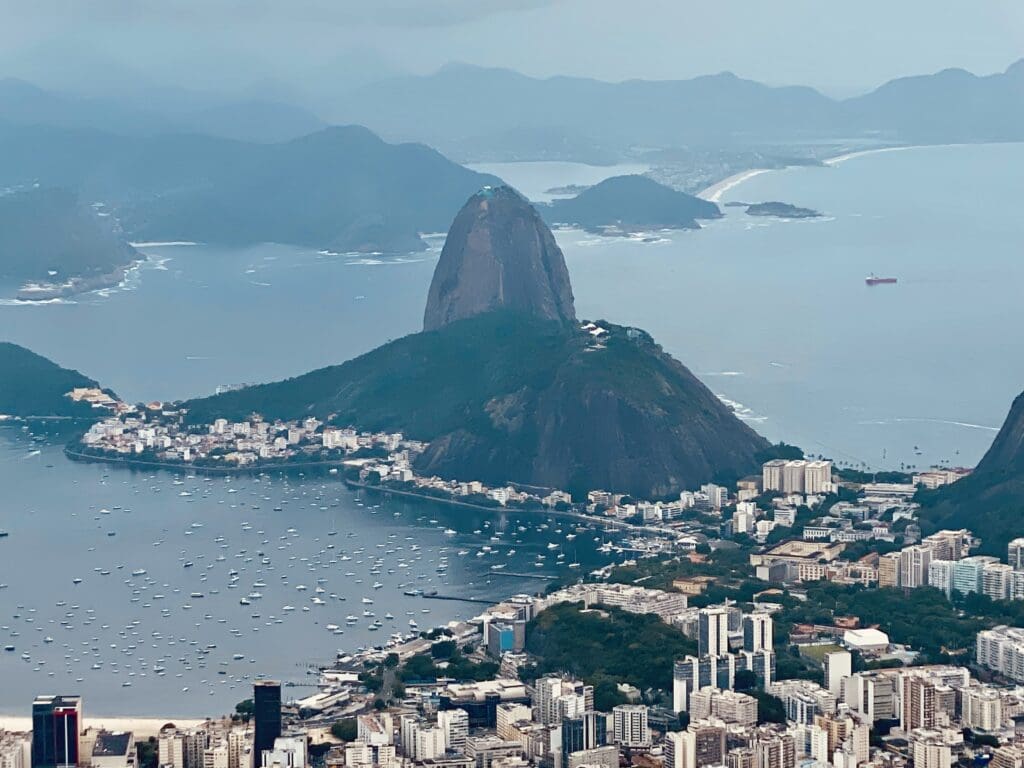
Rio was the capital of Brazil until the 1960s. It is situated between many miles of beautiful beaches and a series of forested mountains that tower over the city. Best known for Christ the Redeemer as well as Copacabana and Ipanema beaches, Rio is about the area of New York City and has a population of 14 million. It is the sixth largest city in the Americas (somewhere between the population of NY and LA).
Rio is a tough town, but it has less poverty than many other Brazilian cities. The poverty-stricken residence are mostly confined to “favela”, the city’s shantytowns located primarily in the mountains and on the outskirts of town. The award-winning movie City of God does an outstanding job of depicting life in favela.
And so we ventured out on our tour. Being that it is New Year’s Eve Day (which turns out to be the most celebrated holiday in Rio) the streets were all but empty. The locals flock to Copacabana Beach today for a two-day celebration, with over 2 million people in attendance! (More on that in a bit.) So, driving through town sightseeing was a breeze.
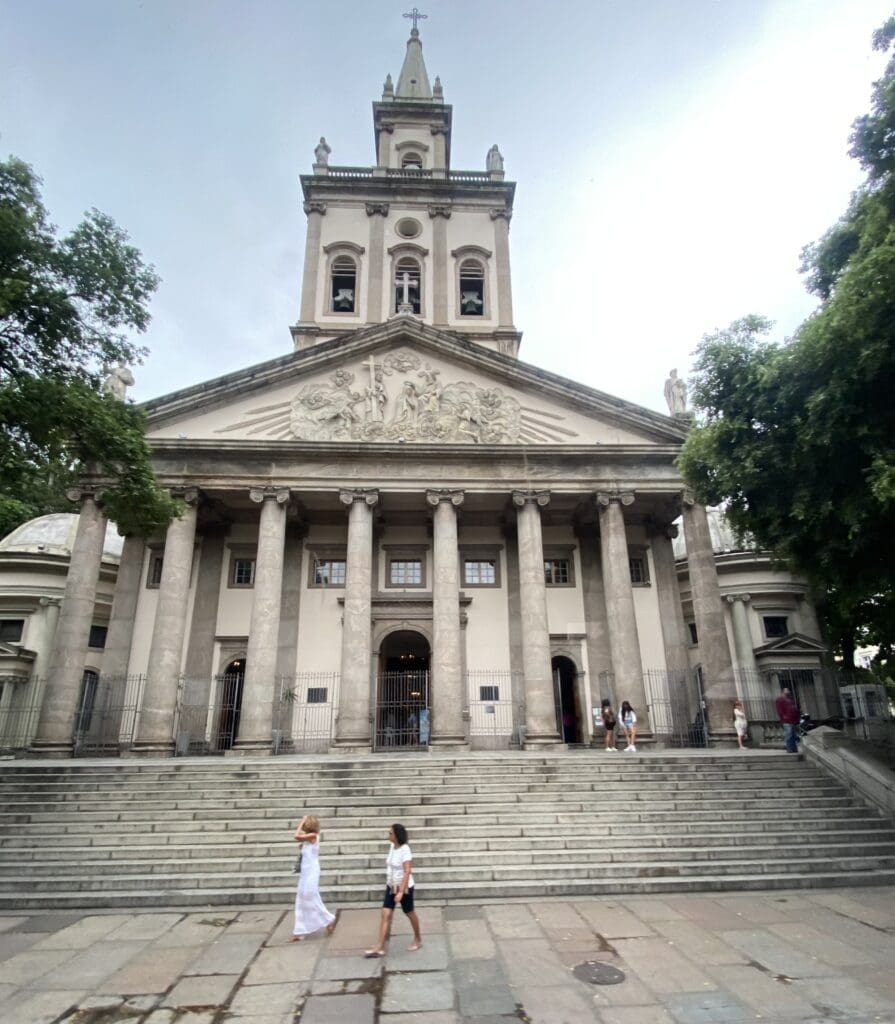
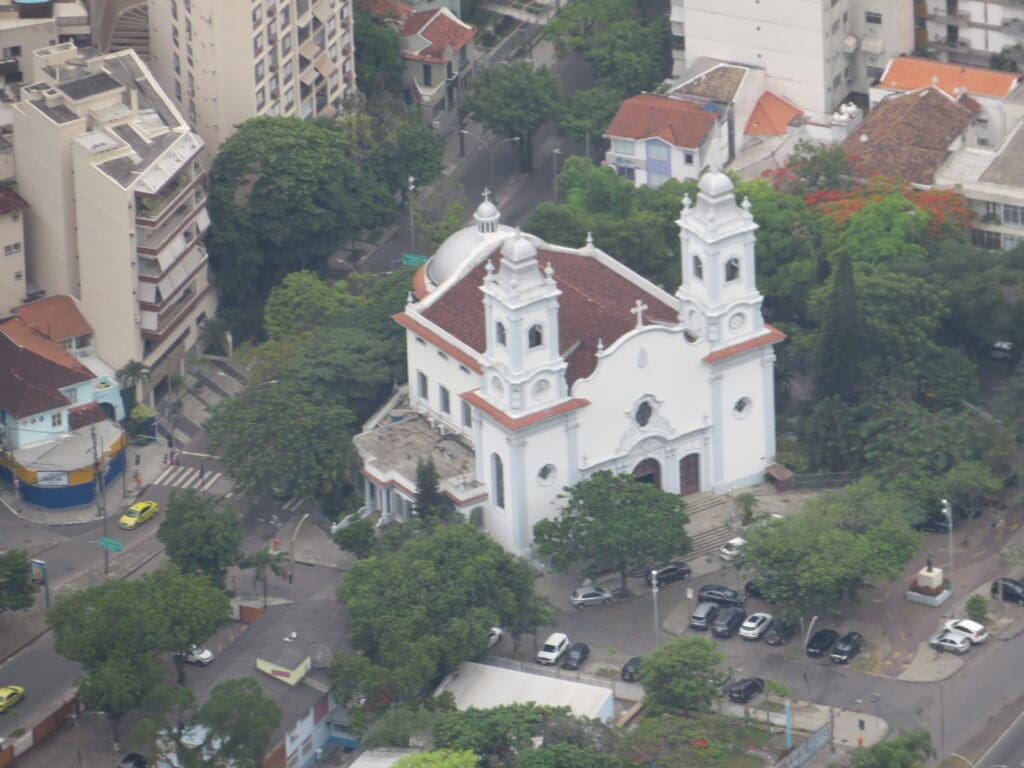

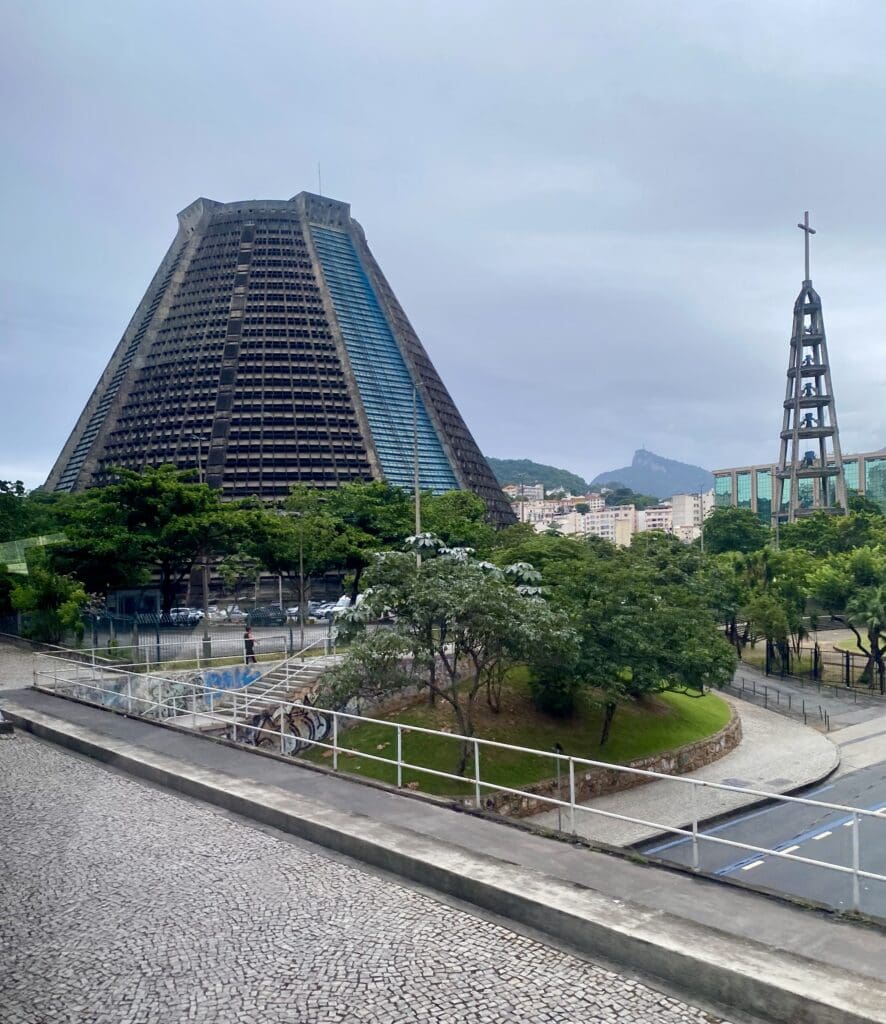
Eventually, we arrived at our destination. Cristo Redentor (Christ the Redeemer in Portuguese) is a 230’ tall statue of Jesus built on a 2,300’ mountain peak overlooking Rio. (It is just a bit taller than the First Nation Bank building in ABQ.)

The statue depicts Jesus with his arms open, signifying peace to all. The original designed called for one hand to hold the planet earth, and the other held a cross on a strap that stretched to the ground. However, even as far back as the 1920’s, “football” (soccer) was big in Brazil. At that time, the Catholic Cardinal decided that too many people from around the world would mistake the planet earth (in the hand of the Brazilian sculpture) as a football, so the design was modified in order to obtain the church’s approval…
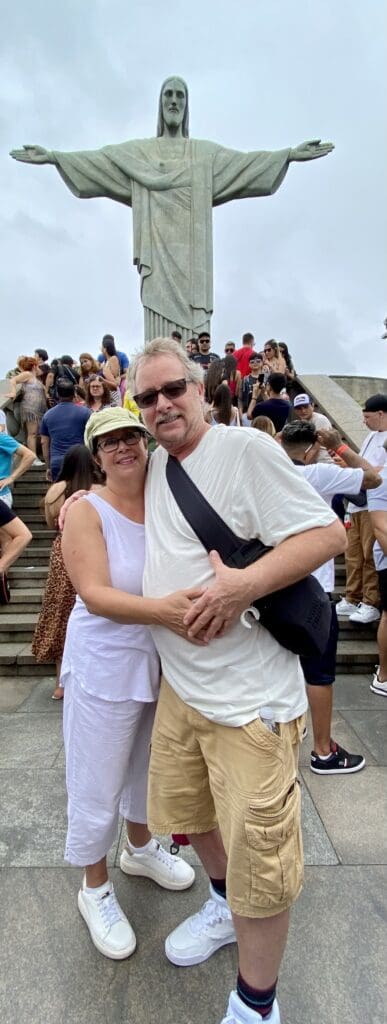
Built between 1922 and 1931, this Art Deco monolith was voted one of the New Seven Wonders of the World in 2007. Because of the statue’s mountaintop location, it is struck by lightning up to half-a-dozen times each year. Also of interest is the fact that the statue was not actually built in its current location. It was created using clay pieces that were subsequently shipped to and assembled in Brazil. Also of interest, the width of the arms is only 6’ less than the height of that statue.
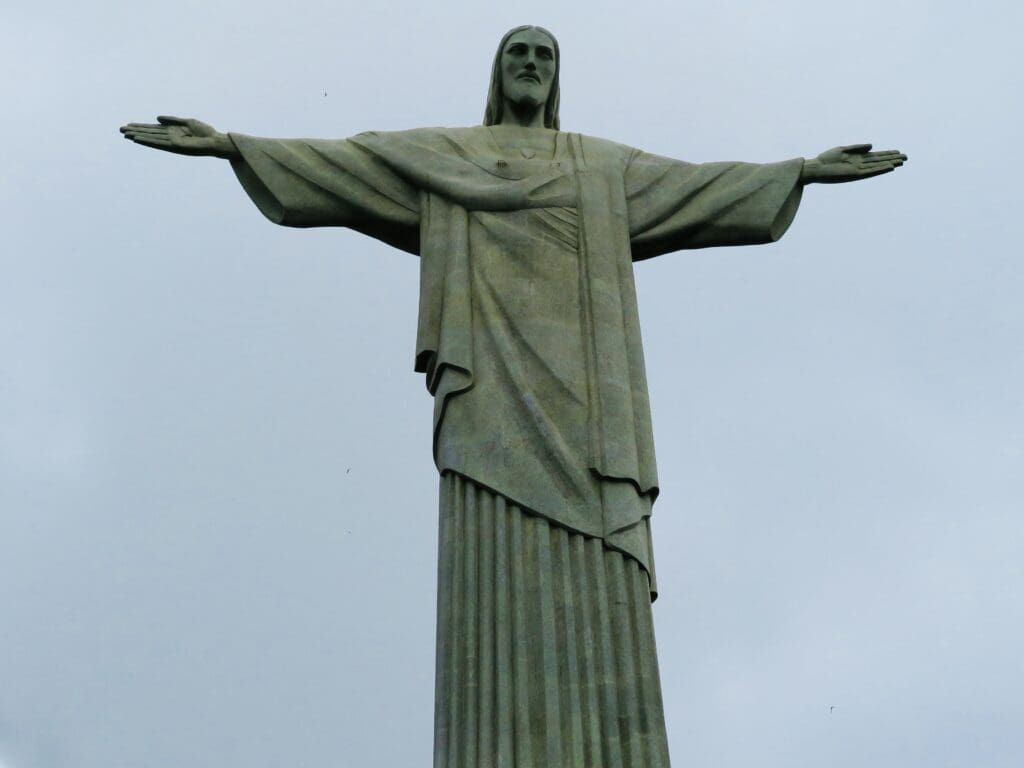
Afterwards, we had lunch at the famous Assador Rio’s Brazilian Steak House. What a place! We especially enjoyed the Guarana soda and the fried bananas. Also, hands down the best sausage I ever had.
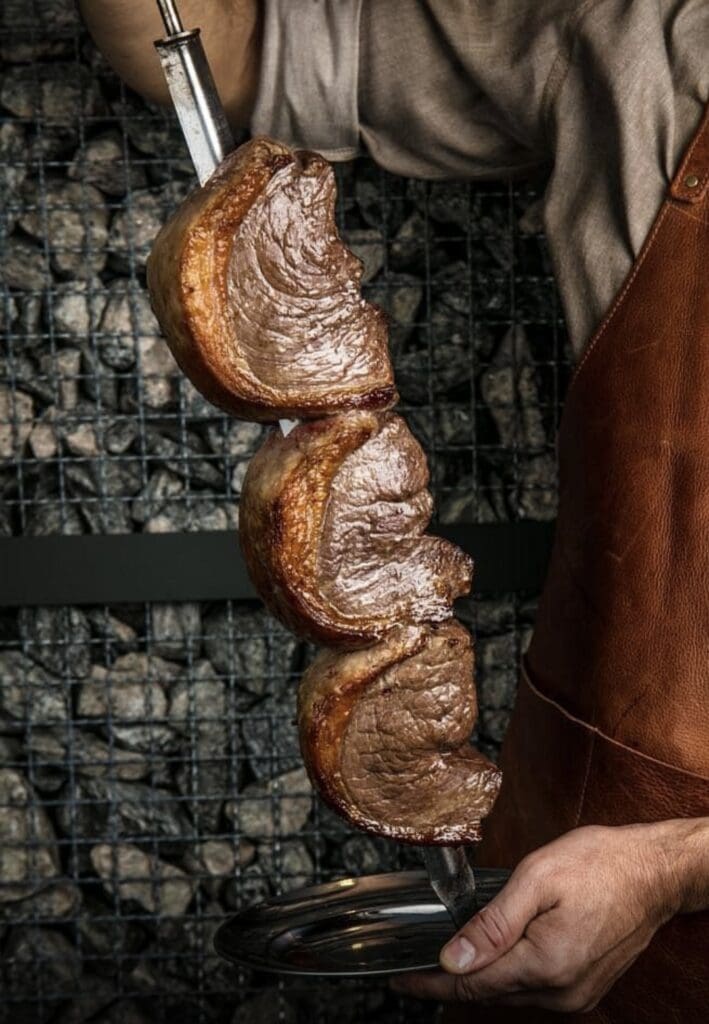
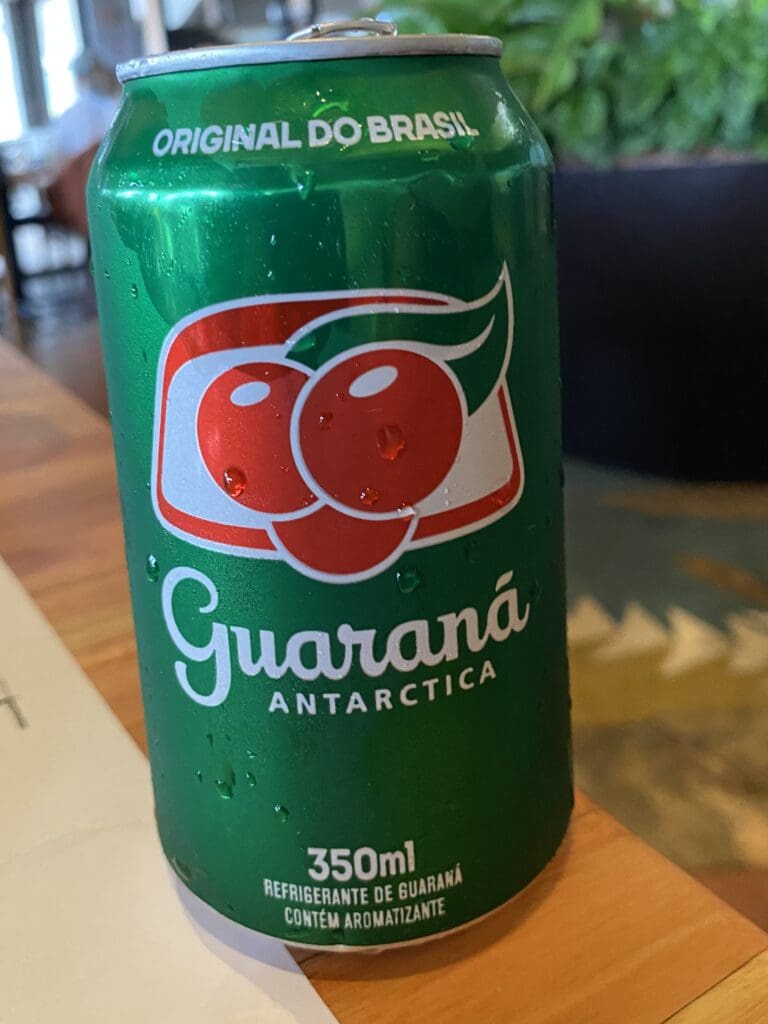
Afterward lunch we headed back to the ship to get ready for Reveillon, the Brazilian 2-day New Year’s Party on Copacabana Beach.
Copacabana Beach is considered one of the most famous beach in the world. It stretches 2.5 miles in one of the liveliest sections of town. The curved beach is lined with waterfront skyscraper hotels, nightclubs and restaurants. Its famous black and white mosaic marble jogging trails sport a unique wavy pattern that draws thousands of visitors daily.
The evening of New Years Eve is the biggest celebration of the year for Copacabana Beach. Attracting up to 2 million visitors in a single night making Rio de Janeiro the stage of “Reveillon”, one of the world’s largest and wildest New Year’s Eve parties.
It’s especially cool, because everyone dresses in all white. I’m not sure how that works out for the locals that camp out on the beach overnight, but we sailed out into the bay to enjoy the festival and fireworks. What a show! Best New Year’s Eve in as long as I can remember.

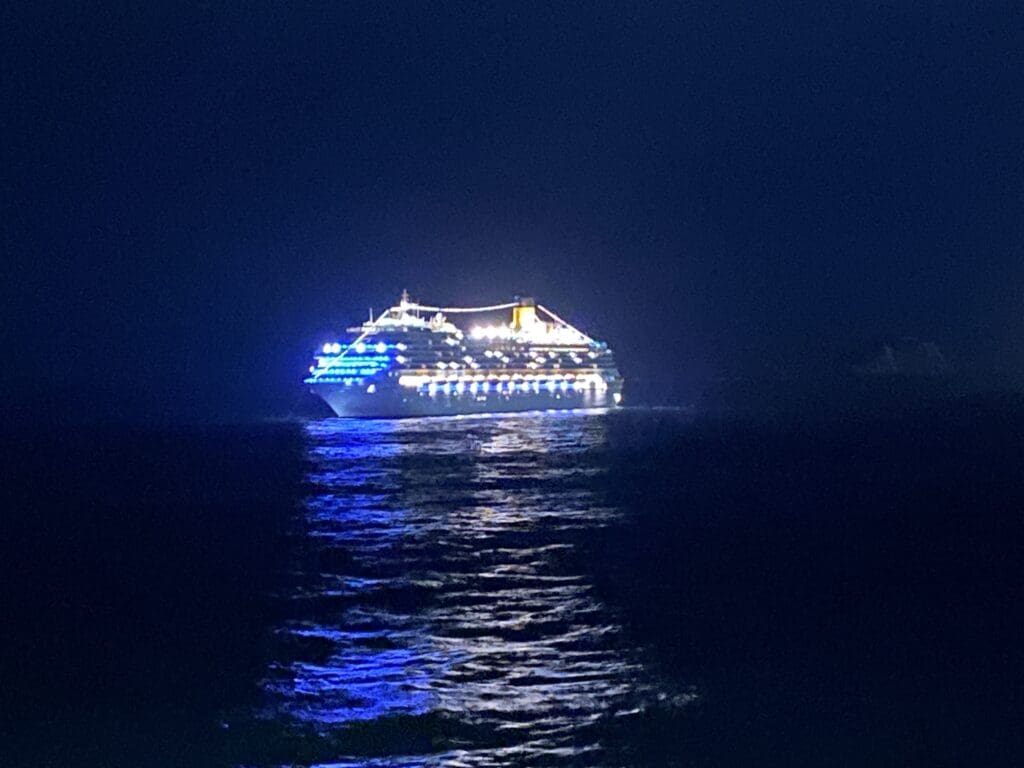
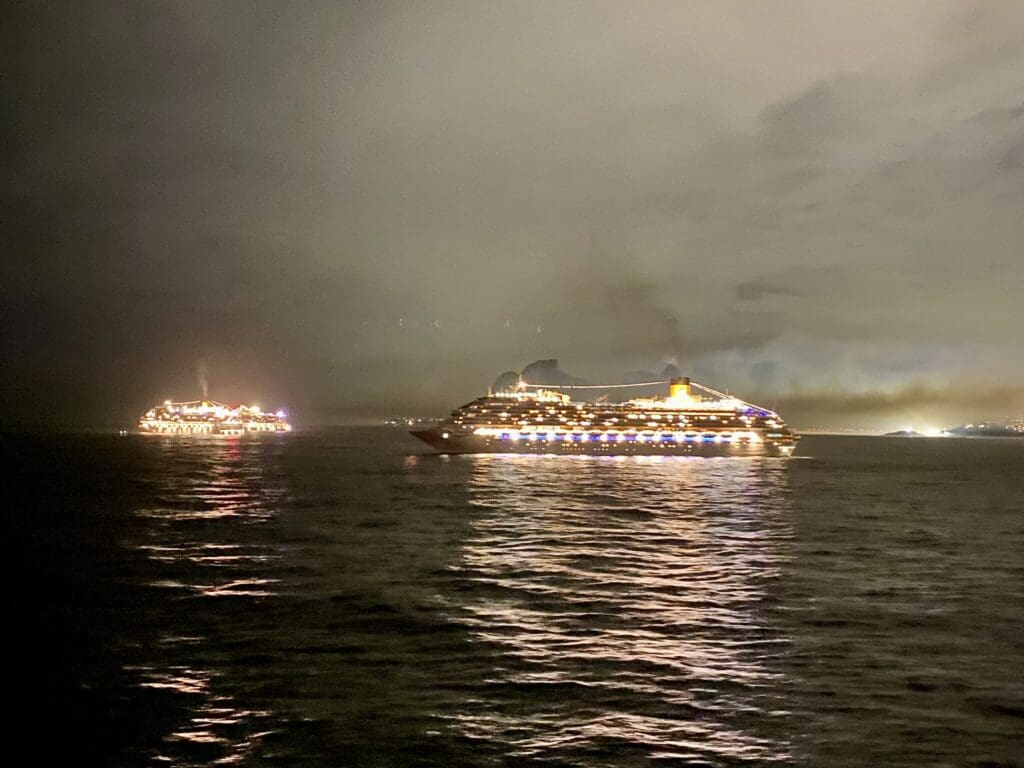
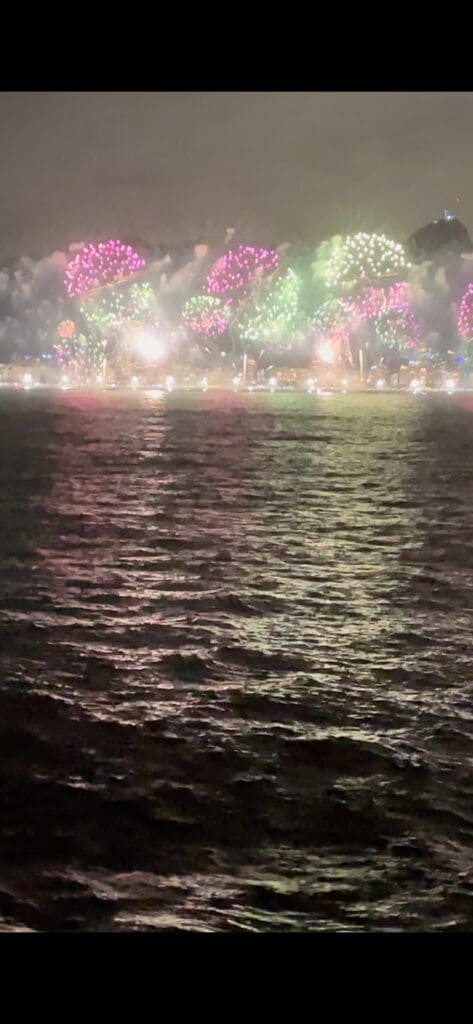
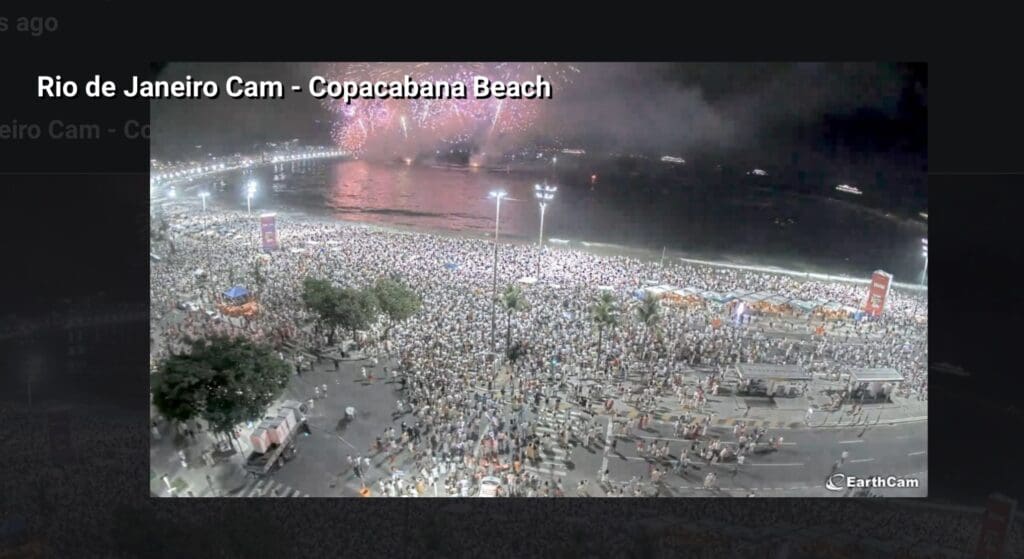
Earlier, I mentioned Inpaema Beach.ll, the most popular and wild beach in Rio. You probably recall the 1960s (Grammy Award winning) song The Girl From Impanema, which is rumored to have been written by a Brazilian poet and a Bossa Nova composer when they were having cocktails one afternoon and happened to notice a beautiful teenage girl walking along Ipanema Beach.
Happy New Year y’all!


Recent Comments